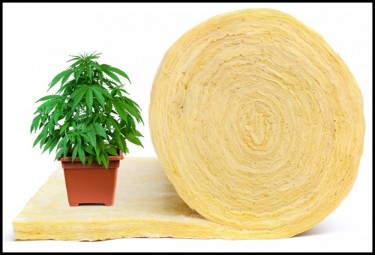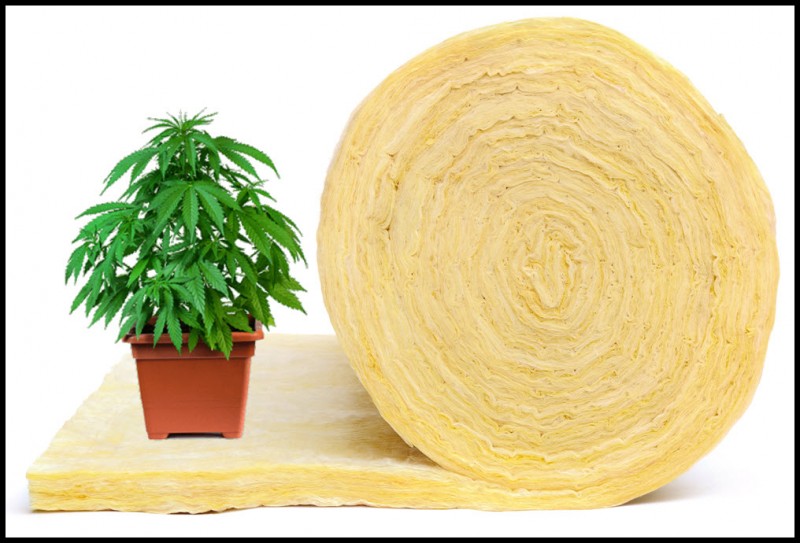Feds Fund Research into Hemp Fiber Insulation as Environmentally Friendly Alternative

Globally, there have been a lot of emphases and focus on environmentally-friendly initiatives across all sectors, and the Feds are starting to take this seriously. One way through which they have shown their commitment to environmental sustainability is through an investment in a hemp fiber insulation project.
The DOE’s investment
America’s Department of Energy has sponsored an initiative that will enable the development of hemp fiber insulation. The initiative will be designed for public health, safety, and the betterment of the environment.
The investment entails a yearly stipend of $90,000 and an additional $200,000 given to Tommy Gibbons, the COO of Idaho’s Hempitecture. This goal can be achieved through research, and Gibbons is optimistic that his company can engage in productive research to achieve the goal.
DOE collaborated with Gibbons’ company because the firm has a HempWool product known as the “Most sustainable” and high-performance insulation material in the world. It is a non-toxic option to other traditional forms of insulation and has a sturdy thermal resistance with a tiny carbon footprint.
Gibbons maintains that the DOE wants to explore the decarbonization prospect of insulation and building materials derived from hemp fibers. His Hempitecture Company will then carry out research and tests on novel blends of insulation materials to increase the value of its insulation and fire resistance.
The search for new environmentally solutions within the building industry
Since the world started to realize a new reality on how other building materials negatively impact the environment, the search for alternative solutions earnestly began. Individuals and government institutions are keen on rebuilding infrastructure to reduce the buildup of a carbon footprint on the environment.
In line with this new reality, the DOE set up the Innovation Crossroads Program, which aligns with the Biden administration’s objective of promoting reliance on clean energy. President Biden is committed to reducing carbon emissions and has expressed his commitment to this cause by rejoining the Paris agreement.
The DOE funding Hempitecture is a unique way of recognizing that hemp is indeed an environmentally friendly investment that will add value to America’s building1 sector. In April 2021, the Environmental Protection Agency (EPA) declared that it would be giving a Washington-based firm a grant to the tune of $100,000.
The grant was a commitment towards building environmentally-friendly blocks from industrial hemp. One of the 24 recipients is “Earth Merchant,” a small business that carries out innovative research programs. Earth Merchant also has a hemp-based product called OlogyBricks, a carbon-negative, durable and lightweight substitute to regular construction bricks.
Traditional construction bricks are made from concrete and other non-environmentally-friendly materials. This kind of brick will be gradually phased out of the construction industry to make hempcrete products. The new hempcrete building materials will boost energy efficiency and maintain the healthy indoor air quality in family homes.
The grants offered by the EPA are not the first time the agency made an effort towards investing in sustainable environmental alternatives. In 2019, the agency also gave a $12,000 grant to a research team led by students at the University of California, Riverside. The grant was offered in support of a hemp study seen as a relevant, sustainable fiber used for construction.
2019 was a good year for the hemp industry as it was a time when America saw the rise and rise of hemp within the building industry. In that year, Republican Rep. Tulsi Gabbard presented a bill that sought to modernize the hemp sector.
The bill was also aimed at the development of peculiar guidelines to boost the hemp industry. It prompts federal efforts towards research into a variety of unique applications for hemp, especially as an alternative to concrete.
Interest in hemp fiber insulation has become a bipartisan issue as former President Trump’s supporters have formed a coalition focused on exploring hemp. They are keen on seeking ways to build a wall by the Mexican border to construct hemp blocks. The group had already started the consultative process by reaching out to a Kansas hemp company to confirm the possibility of having a hempcrete wall by the Southern border.
So what is the big deal about hemp fiber insulation?
Well, hemp is a low-carbon and durable option that has been used from ancient times and is currently the preferred building material for environmentally conscious builders.
Hemp insulation is made from hemp fibers, with the final result being a breathable and resilient alternative to concrete. Its low conductivity levels and increased thermal mass make the building cooler during summer and warm in the wintertime.
So there is a lot more hemp insulation offers the building industry, which concrete cannot provide. In addition to other benefits discussed above, hemp insulation can be reusable if it is in good condition; it does not encourage the habitation of pests and is excellent for energy recovery.
Hemp insulation is best for wooden structures because it doesn’t allow moisture to accumulate inside timber. The insulation idea is one of the most popular ways of using hemp plants hence the reason more hemp farmers are smiling to the bank because there is a lot of interest in the hemp market right now.
If you are interested in growing hemp, this is an excellent time to take it seriously because the plant will play a crucial role in the future within the building sector.
Bottom Line
With such delightful news about the DOE’s investment in Hemp Fiber Insulation, it is more evident to all that the hemp/cannabis industry is adding value to the American economy. Aside from being a valuable substance used in the skincare, medical and beauty sector, hemp now represents the future of insulation materials as an environmentally friendly option.
This is also further confirmation that the hemp industry is strategically positioned as the most preferred material that is safer and healthier for the environment. Investors like the DOE are already taking advantage of this innovation; if you haven’t done so already, get on it!!





